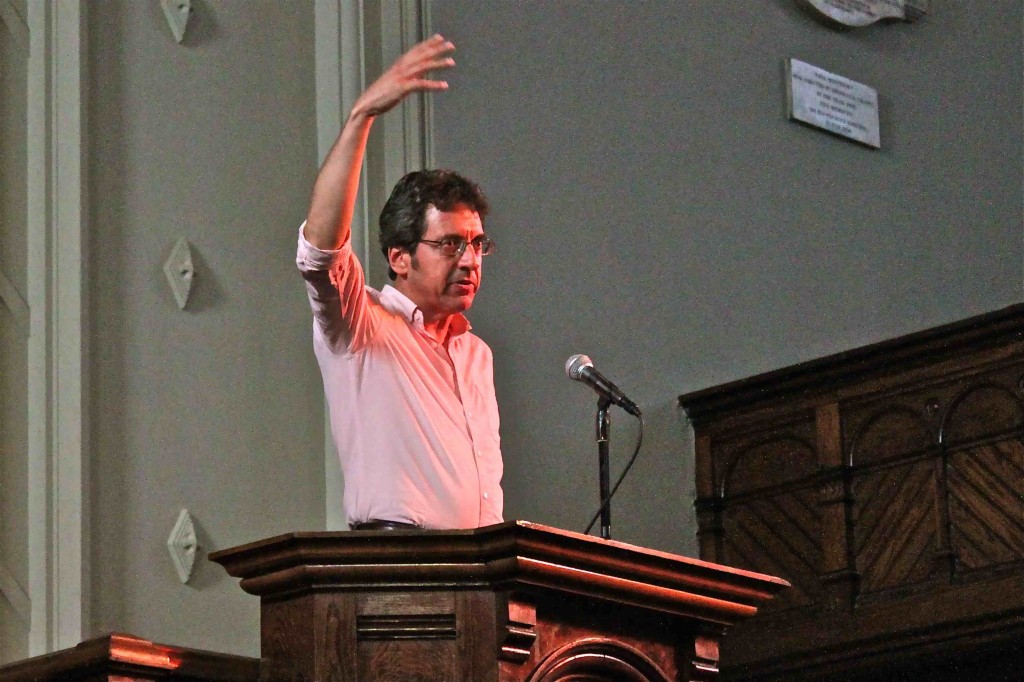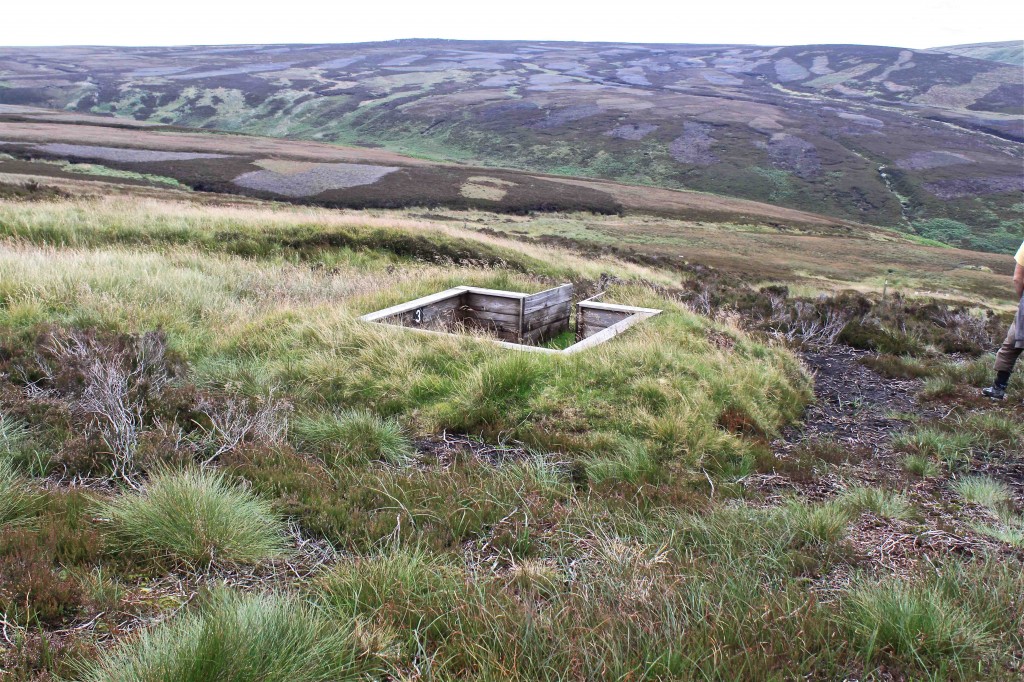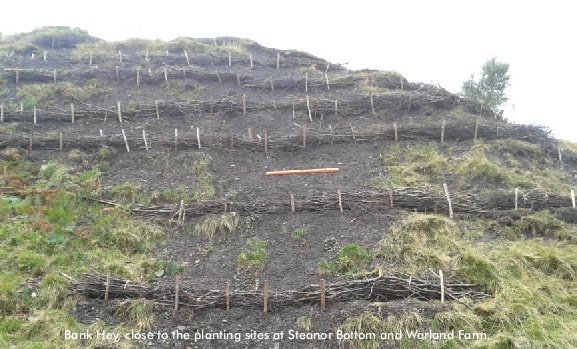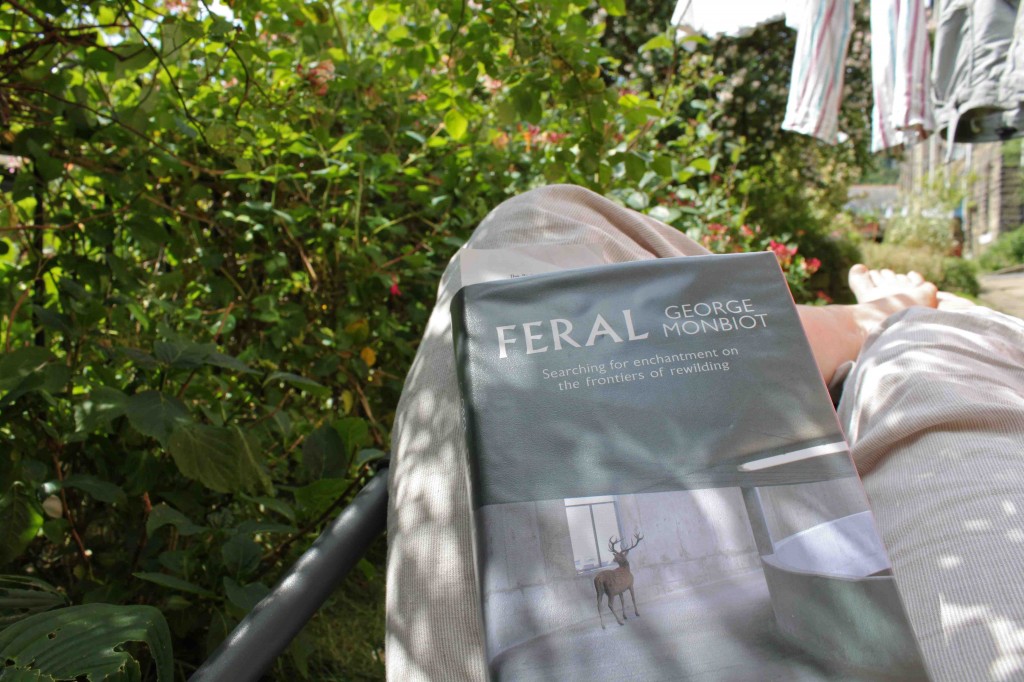Joking that he felt like an old-time hell-fire preacher speaking from the pulpit of Hope Baptist Church, George Monbiot instead brought a vision of hope to the packed audience yesterday at Hebden Bridge Arts Festival.
Launching a national rewilding group – [ now launched, one year on] – he extolled the delights of an environment where biodiverse plants, insects and animals flourish thanks to the reintroduction of keystone species at the top of the food chain – such as beavers, pine martins and wolves.
He anticipated the raucous summer that would follow the silent spring that Rachel Carson described in 1962, in her book about the destruction of nature through industrial farming.
Lamenting the current degraded state of the environment – particularly the uplands which are “about as biodiverse as the average multi-storey car park” thanks to current farming, grouse shooting and conservation practices – he explained that rewilding has turned ecology upside down.
Traditionally, ecologists have believed that ecosystems build from the bottom up – from the establishment of habitats that support species at the bottom of the food chain.
But rewilding – the re-introduction of top predator species – has shown that the process of trophic cascade – big things eating smaller things – leads to a massive growth in biodiversity and this in turn can change an area’s physical geography.
As an example, the reintroduction of wolves into Yellowstone National Park in the States meant deer were kept on the move (and sometimes eaten) so their former stamping grounds recovered, trees and other vegetation grew and stabilised the river banks, changing the shape and flow of the river.
In Ireland, the reintroduction of pine martens has allowed red squirrels to recover from a losing battle with grey squirrels, who – unlike red squirrels- are not adapted to survive alongside pine martens and are easy prey for them.
Part of the problem is shifting baseline syndrome – the process of normalising the state of nature based on what we experienced and observed in our childhood and assuming that’s the normal baseline. This overlooks the fact that that baseline is already degraded, and so we increasingly forget what an ecosystem could be.
Hebden Bridge at the sharp end of environmental degradation
George Monbiot said that Hebden Bridge is at the sharp end of this.
Where land is allowed to do what it wants, uplands are largely forested. This is the case in mainland Europe. In Britain the uplands are bare – an anomalous situation where there are no trees on high hills.
Where forests survive, biodiversity is maximised; when forests are lost, biodiversity is lost. That’s not surprising – most animals need cover.
Taking Hebden Bridge as an example of a place that suffers intensely from a degraded environment, as badly managed moorland increases flood risk in the valleys, George Monbiot said that we fetishise permanent pasture and heather moorland as an ideal state of nature, but they are the product of long term cutting and burning.
“We pour £millions into keeping them in that state and we wonder why we get downstream flooding and no trophic structure. It’s insane. What we call conservation is in fact agriculture, and a destructive form of agriculture. And if it’s not, it’s grouse shooting and deer stalking. And we fetishise this.
But when we lose trees, we get floods. When we burn land we get flooding and lose carbon in the soil too.”
Namechecking the work of Hebden Bridge’s Ban the Burn and the Source
project, George Monbiot said,
“Source is doing fantastic work blocking up grips, restoring bare patches and planting trees. For every £ they spend, we spend £100 of taxpayers’ money doing the reverse. This year the subsidy to grouse moor owners has increased from £30 to £56 per hectare. In an age of austerity, this money goes to the very richest people in the nation.
Britain has the second highest concentration of land ownership in the world, after Brazil.”
After the talk, Hebden Bridge food writer and member of the Food Ethics Council Geoff Tansey said,
“This was a really interesting talk. It’s not just about the environment – it links into a bigger challenge about the redistribution of power in Britain and transitioning to a more just and equitable society.”
Farm subsidies – taxation without representation
In a talk that challenged EU and UK government conservation policy as well as farm subsidies, the concentration of land ownership in the UK and the secrecy that means we rarely know who owns the land we all depend on, Monbiot attacked the imbalance of power and wealth that has seen the government cap the amount of benefits a household can receive at £26k/year, while refusing to accept a proposed EU Commission cap on farm subsidies of £260K/year per land owner/farmer. He said,
“We put all this money in farm subsidy but have no representation in how it’s used. This is taxation without representation, but even worse, because we don’t know who we’re giving the money to. There are vast areas of land where we don’t know who owns it.
“The Duke of Westminster and Richard Bannister [the owner of Walshaw Moor Estate] can have unlimited payments from the public purse. We should call it the flooding subsidy. Walshaw Moor Estate is getting Higher Level Stewardship subsidies to continue a regime of cutting and burning that contributes to flooding in Hebden Bridge.What greater assault on the land can there be than burning land?
And all for the sake of shooting highland chickens”
Asked what rewilding would mean for Hebden Bridge and its moorland catchment area, and whether all the Yorkshire moors should be allowed to reforest, George Monbiot said that local farming communities were important and they should be offered a choice.
At the moment, in order to receive the farm subsidy, they have to keep their land in what is called Good Agricultural and Environmental Condition (GAEC). This forbids “unwanted vegetation”. But farmers should be allowed to do something different with the land. He said that rewilding will revitalise communities more than current farming practices do.
Last year in Hebden Bridge, Pennine Prospects and Natural England held a conference about Working with National Character Areas. Natural England has developed a Natural Character Profile for the South Pennines, which it describes as:
“a landscape of large-scale sweeping moorlands, pastures enclosed by drystone walls, and gritstone settlements contained within narrow valleys…future challenges for the area include managing the land to reduce downstream flooding, restore blanket bog and improve water quality, and managing increased recreational demand.”
But what if the most effective way of meeting those challenges turns out to be rewilding, as George Monbiot claims?
Will Natural England be willing to rewrite the Natural Character Profile?
And where would that leave the Bronte tourist industry?
Meanwhile -in search of a breeding pair of pine martens and land for Source stewardship

In the meantime, the owner of Calder Valley woodlands planted 15 years ago by Treesponsibility is about to contact Vincent Wildlife Trust about acquiring a breeding pair of pine martens, and Source coordinator Penny Eastwood would love to hear from anyone who can offer land for stewardship and treeplanting.
George Monbiot’s book Feral: Searching for enchantment on the frontiers of rewilding is available at Hebden Bridge Library and The Bookcase, Hebden Bridge.
Updated 15 July 2015 with link to the new organisation Rewilding Britain.






I wasn’t able to get to the meeting, but am quite concerned by the implication in your report that our uplands are lifeless, and would be more biodiverse if left to return to forest.
Whilst wholeheartedly agreeing with George’s oppostion to grouse shooting subsidies, it also seems to me that his ‘white plague’ rhetoric about sheep is likely to be counter productive. There may even be some ecological benefits associated with upland sheep farming. Some years ago we used to refer to the fields along Lumbutts Road as ‘Lapwing city’. Now that they’re mainly used for equestrian purposes there are hardly any Lapwings left. These, and other ground nesting birds such as curlews, can evidently shoo sheep away from their nests, but not horses.
I hope someone pointed out that a considerable swathe of our tops is designated as internationally important for moorland birds? If these moors, that have mostly not been wooded since the Bronze Age/Roman times, were reforested, there would, surely, be a loss of biodiversity? I hope I wouldn’t be alone in mourning the loss of short-eared owls, snipe, golden plover, skylarks, grey partridges, merlins, curlews, twite, ring ouzel, northern eggar moths, bog asphodel, sphagnum moss, deergrass, cotton grass, and so on – not to mention the wonderful carpets of heather that have recently been sustaining large numbers of butterflies. Many of these bird species are in precipitous decline elsewhere, so our distinctive uplands are a stronghold for them. (Hen Harriers have been driven to the edge of local extinction by the intensive grouse shooting, of course).
I suspect that any new woodland cover would be much the same as elsewhere, so would not represent much gain in biodiversity, and would not be isolated enough, or on a large enough scale to introduce larger predators?
Given our high population density, and long history of industrialisation, I think its incumbent upon us to allocate and manage land for species that need habitats such as reedbeds, heath, and moorland – not just forest. This often means taking trees out, and in the case of moorland, avoiding planting them nearby. So, although I like the idea of rewilding, I’m not convinced that it would be appropriate for the Calder Valley’s moorland. I’d be interested to hear whether these concerns were explored at the meeting.
with best wishes
Brian
Great article, thank you. You really bring the event to life, the photos are wonderful.
Brilliant and would be popularly supported. However, how does the government’s plan (regardless of which neo-liberals actually get in in 2015) for widespread and intensive fracking fit this model?